Nikon D40x Review
Nikon D40x
This is Nikon's answer to the EOS 400D. So is it a yes or a no?
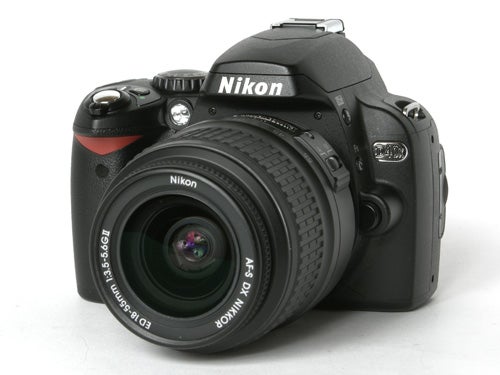
Verdict
Key Specifications
- Review Price: £490.00
To say that Nikon and Canon are in competition with one another is something of an understatement. They are the Manchester United and Arsenal, the Schumacher and Alonso, the Tyson and Holyfield of the camera world. They hold the number one and two positions in the lucrative digital SLR market, with Canon pretty firmly in the lead. Nikon would dearly love to take a big slice out of Canon’s market share, and the best way they can do that is to target Canon’s most successful camera, the EOS 400D. Nikon must have known that its range of six-megapixel DSLRs such as the D50, D70 and D40 couldn’t compete with the 10-megapixel 400D when it was launched in August last year, and so had to do something urgently to redress the balance. Nikon must also be concerned by the fact that Sony has leapt into third place in the DSLR market thanks to the well-deserved success of the excellent Alpha A100, and has two new models waiting in the wings.

So, entering from the red corner we have the new Nikon D40x, introduced in March of this year, a radically updated version of a camera which was only launched five months previously. The D40x is quite clearly designed to take on the EOS 400D, in fact it is all but identical to its rival. Is this parallel evolution, or the sincerest form of flattery? Comparing the two cameras side-by-side shows that they are within a couple of millimetres of being exactly the same size (126 x 94 x 64mm for the D40x, 126.5 x 94.2 x 65mm for the 400D) and within a few grams of being the same weight (495g for the D40x, 510g for the 400D). In price as well there’s almost nothing to choose between them. The D40x is available with an 18-55mm f/3.5-5.6G ED II lens for £498 or body-only for £419, while the EOS 400D is £478 with an 18-55mm f/3.5-5.6 lens or £437 body-only, although to be fair I wouldn’t want to pay more than £31 for the lens supplied with the 400D.
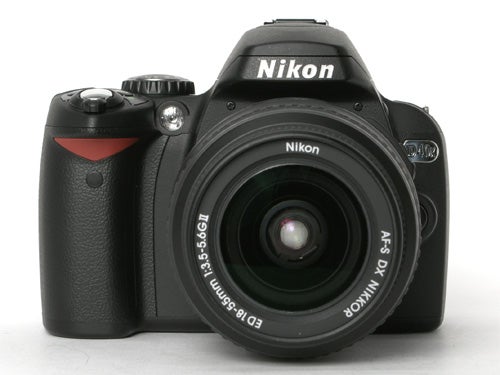
In terms of specification the match is even closer. The D40x is a 10.0-megapixel camera sporting a 23.6 x 15.8 mm DX-sized Sony CCD sensor, quite likely the same CCD found in the D80 and D200, generating a final image size of 3,872 x 2,592 pixels, compared to the 400D’s 3,888 x 2,592 from its CMOS sensor. Both cameras have a 2.5-in TFT LCD monitor with 230,000 pixels, a mirror-type viewfinder with 95 percent frame coverage, and a simple control interface utilising an on-screen menu system and a single data entry wheel, although the Nikon’s wheel is on the back. Like the 400D the D40x has no top-panel LCD data display, instead displaying shooting data on the monitor screen; however this is off most of the time and has to be activated with a button press. One difference is the choice of memory card. The 400D uses the CompactFlash format favoured by professionals, while the D40x uses SD cards including the new SDHC format.
The D40x is intended as an entry-level model, so while it lacks certain professional features such as dial-in white balance temperature or an external flash socket, it does have a number of useful beginner-friendly features. As well as the usual SLR staples of program, aperture or shutter priority and full manual exposure control, it also has a range of scene modes such as portrait, sports, landscape, night scene, macro and children. Crucially, this is one more scene mode than the 400D.
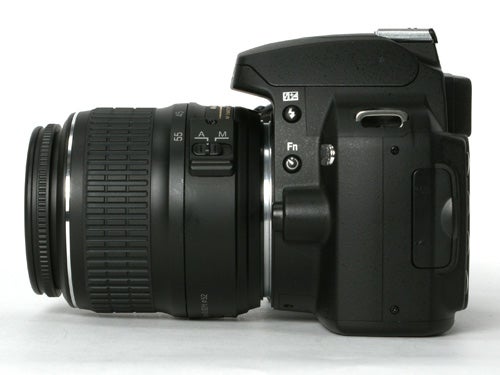
The menu system as well has been designed for learners. In fact there are two menu systems; the main list of options accessed via the menu button in common with most other digital cameras, and a visual interface based around the monitor shooting data screen. This is similar to the system used on the Olympus E-500, although I do like Nikon’s implementation better. When changing settings it shows a thumbnail sample shot of the type of picture for which that setting might be appropriate, for example light objects on a dark background for spot metering, or a fast-moving subject for continuous AF. It also features a comprehensive system of help files available at the press of a button, giving advice on every option on the menu. It’s a bit like a more complex version of Casio’s Best Shot mode, and would be enormously helpful for a novice user who finds the huge flexibility of a modern DSLR a bit daunting. It’s also worth pointing out that the D40x comes with a very good 126-page printed manual, when so many cameras these days only come with a PDF manual on CD.
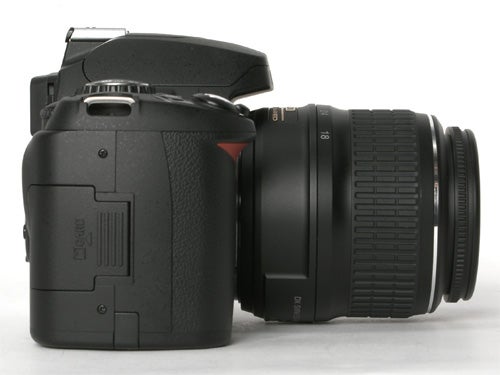
All of the settings on the visual menu and more can be adjusted or pre-set in the comprehensive main menu system, which also includes a wide range of options for post-processing, such as the ability to superimpose two RAW images on top of one another in-camera, and one of the most versatile colour adjustment options I’ve ever seen.
The D40x is not just a D40 with a bigger sensor. The internal electronics have been completely revised as well. It has a new processing system which allows it to shoot at a much faster frame rate than the D40. It can manage an impressive three frames a second, and in JPEG mode it can keep this up until the card is full, although it’s worth noting that the speed of your memory card will make a big difference. Using a high speed SanDisk Extreme III SD card I was indeed able to shoot at 3fps continuously, but using a standard speed SDHC card the shooting rate dropped to approximately one frame a second after nine shots.
The D40x also has a very fast AF system, but whereas the EOS 400D, and indeed most of the other sub-£500 10MP DSLRs such as the Sony Alpha A100 and Olympus E-500, have multi-point systems, the D40x has only three focus points. I tend to use the multi-point AF on my A100 a great deal, so I would find the Nikon’s AF system restrictive. It’s difficult to fault it in other areas though. It has what may be the brightest AF assist lamp I’ve ever seen, and is able to focus in complete darkness at a range of at least eight meters.
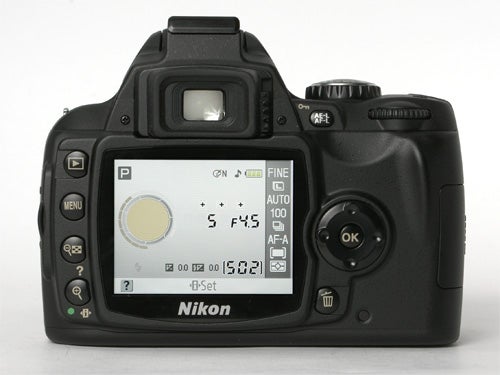
All in all, the experience of using the D40x is very pleasant. The camera is light and easy to hold, with a sensibly laid out control system that quickly becomes intuitive. Despite its relatively low cost and plastic body it feels very solid and well made, and every inch a Nikon. It’s easy to see the resemblance to the more professional models such as the D80 or D200. It performs quickly and quietly, and even a first-time user should have no trouble producing first-class results.
Of course the key criterion for a digital SLR is image quality, and here the D40x really shines. The 18-55mm f/3.5-5.6G ED II lens is significantly better than the lens supplied with the EOS 400D, and combined with the improved image processing of the D40x it provides a fantastic level of fine detail, superb contrast and flawless colour reproduction. It is very difficult to draw distinctions between the various 10MP DSLRs currently available, but based on my subjective opinion of the photos that I was able to take with it I think the D40x has, by a narrow margin, the best image quality of any that I’ve seen so far, crucially slightly superior to the EOS 400D.
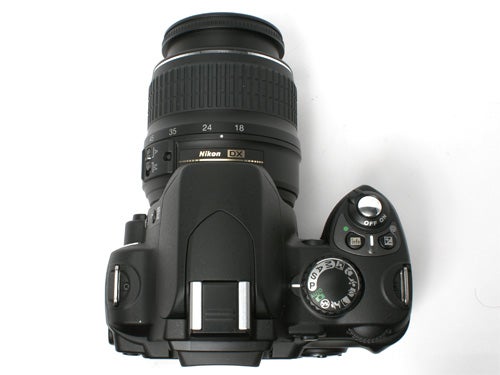
One area where the D40x excels is in noise control. It has an ISO range of 100-1600, and only at the highest setting was image noise even visible. It was almost impossible to spot the difference between shots taken at 100 ISO and those taken at 800. In this respect it scores a major win over the 400D.
It has three JPEG modes (Basic, normal and fine) as well as RAW and RAW + Basic JPEG. Having compared all the modes, I have to say that the D40x’s JPEG image processing is so good that it almost makes the RAW mode redundant. Shooting the same image in fine JPEG, and then again in RAW mode and converting it to JPEG using the supplied software it is impossible to tell the difference. The RAW mode is really only useful if you want to save your images as TIFF files, or if you want to make major changes to the sharpness or colour balance, although there is little reason to do either.
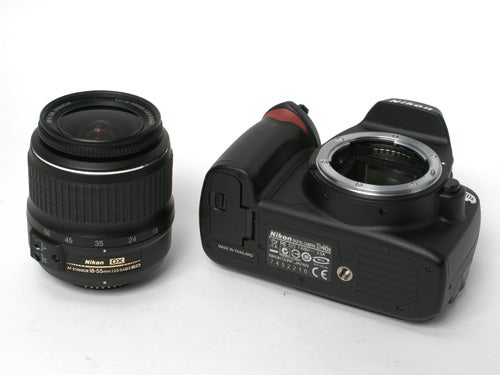
The redundancy of the RAW mode is a good thing in a way, because I did encounter one small problem, although not with the camera itself. The D40x uses Nikon’s proprietary NEF RAW format, but it uses a new version of it which is not yet supported by Adobe Camera RAW, the standard Photoshop CS2 file converter plug-in used by professional photographers to process their images. This means you have to use the supplied Nikon Picture Project 1.7 software, which is frankly not very good. It offers very limited scope for creative image processing, and is really only useful for converting the NEF RAW files to TIFF format so you can use them in Photoshop.
”’Verdict”’
In the D40x Nikon may finally have got the entry-level DSLR that can give Canon a run for its money while holding off Sony’s advance. It is, by an admittedly narrow margin, a better camera than the EOS 400D in many respects, including the crucial area of overall image quality. It is easy to use, has Nikon’s traditional fantastic build quality, and performs superbly well. If you’re looking for an SLR for under £500 the D40x should be near the top of your list.
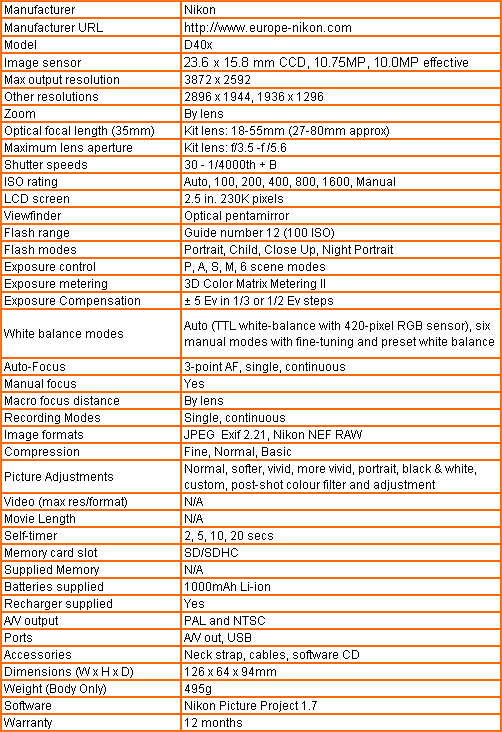
”A range of test shots are shown over the next few pages. Here, the full size image at the minimum ISO setting has been reduced for bandwidth purposes to let you see the full image, and a series of crops taken from original full resolution images at a range of ISO settings have been placed below it in order for you to gain an appreciation of the overall quality.”
—-
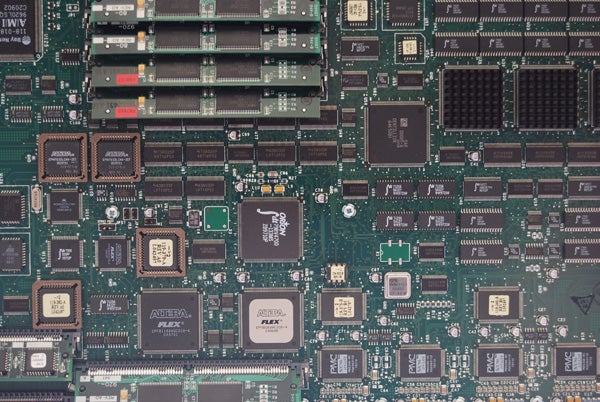
—-
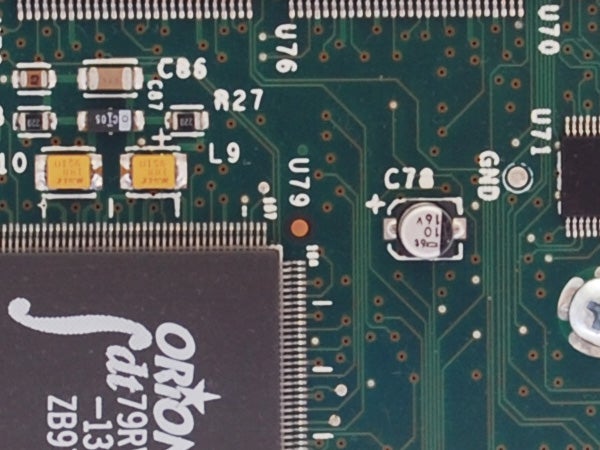
At 100 ISO the D40x produces beautifully smooth, well detailed shots, as one might expect.
—-
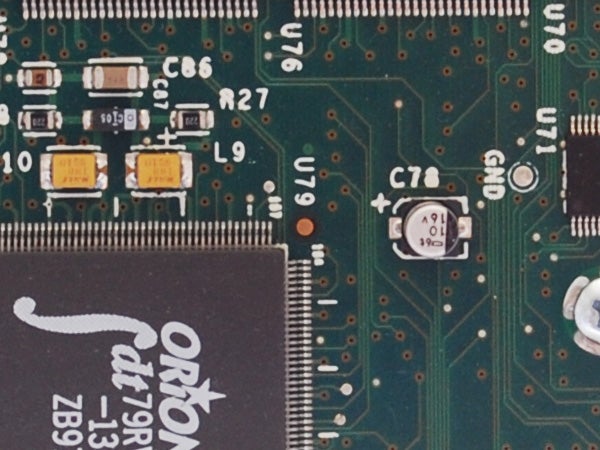
Likewise at 200 ISO.
—-
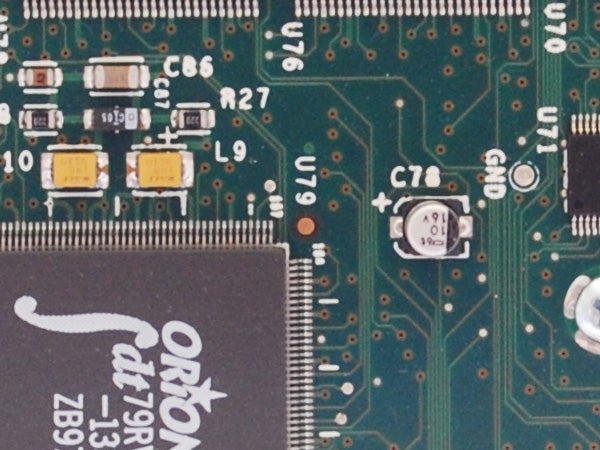
Still no problems at 400 ISO
—-
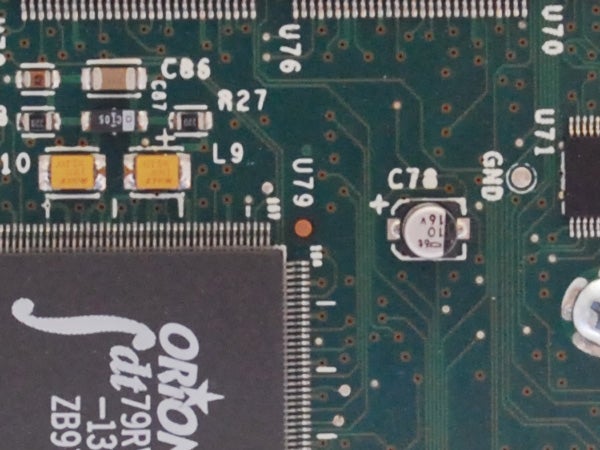
800 ISO and still no noise. Compare this to the test shots from the EOS 400D.
—-
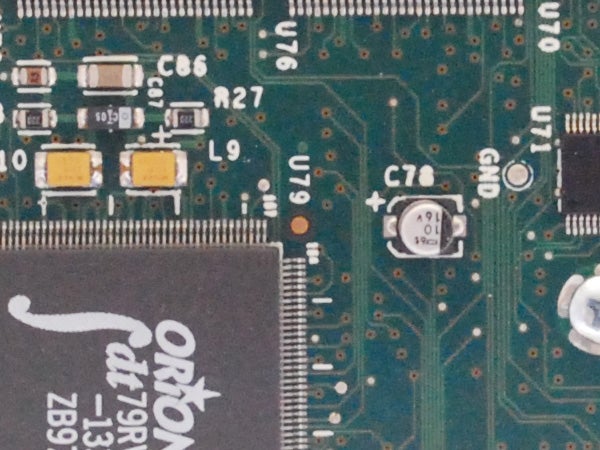
At the maximum 1600 ISO there is just a light speckling of image noise, but this would still look good as an A4 print.
—-
”A range of test shots are shown over the next two pages. Here, the full size image has been reduced for bandwidth purposes, and in some case a crop taken from the original full resolution image has been placed below it in order for you to gain an appreciation of the overall quality.”
—-

I try to take the same test shot with every DSLR, for a more useful comparison. Unfortunately it was a bit hazy when i took this, but not too much to guage the level of detail.
—-

Despite the haze, the high level of detail in this full-res crop is still visible. Compare this with my other 10MP DSLR reviews. Look particularly at the window frames on the hotel.
—-

The D40x does a particularly excellent job with close ups, focusing quickly despite the close range.
—-

This is a full-res crop from the above image. The detail and colour are stunning.
—-

The kit lens supplied with the D40x is surprisingly good, better than most basic standard zooms, producing very little distortion at wide angle.
—-

This was shot at full zoom on the 18-55mm lens….
—-

…while getting closer but using the wide end of the range produces this effect.
—-

This is a crop from the corner of the wide-angle shot above, showing the excellent corner sharpness and lack of distortion.
—-

This image was shot in RAW mode and converted to JPEG using the supplied software. No other adjustments have been made to it.
—-

This is a crop from near the centre of the above image.
—-

This shot was taken using the Fine JPEG setting on the camera.
—-

This is a crop from the JPEG image. As you can see there is virtually no difference between this and the converted RAW shot.
—-
Trusted Score
Score in detail
-
Value 10
-
Image Quality 10
Features
| Camera type | Digital SLR |
| Megapixels (Megapixel) | 10.2 Megapixel |
| Optical Zoom (Times) | 3x |
| Image Sensor | CCD |
| LCD Monitor | 2.5 in |
| Flash modes | Auto Flash, Red-eye Reduction |
| Memory card slot | Secure Digital (SD) Card |

